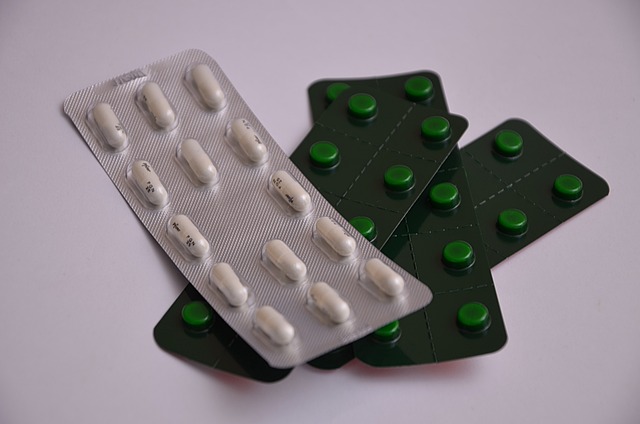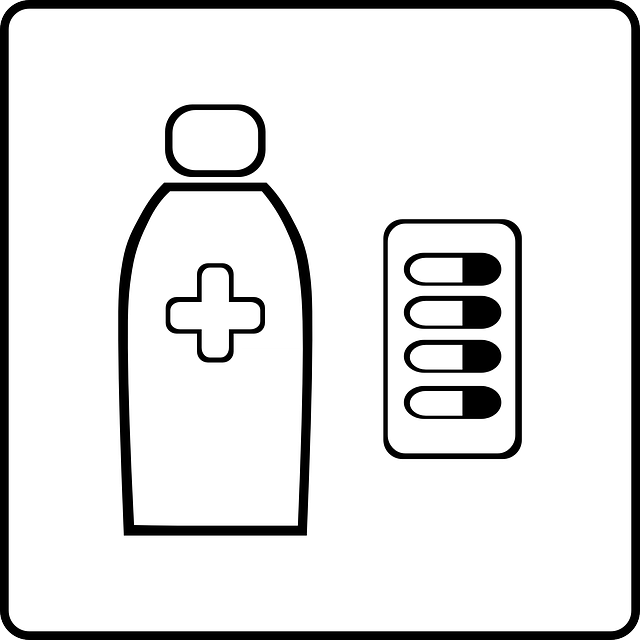Semaglutide is a groundbreaking medication for type 2 diabetes management, acting as a GLP-1 receptor agonist to regulate blood sugar levels and promote weight loss. Administered weekly via injection, it offers a convenient, effective solution with reduced cardiovascular risk. Clinical trials highlight its promising benefits. To maximize its efficacy, lifestyle modifications like diet, exercise, and hydration are crucial, along with regular monitoring of blood sugar levels. Open communication with healthcare providers is essential to manage potential side effects and interactions with other medications. Regular check-ups and home testing empower patients to control their diabetes and prevent complications. The future of diabetes care looks promising with advancements in personalized treatments and technology.
“Discover how semaglutide, a groundbreaking glucagon-like peptide-1 (GLP-1) receptor agonist, is transforming diabetes care. This article provides a comprehensive guide to understanding and utilizing semaglutide as part of an effective diabetes management plan. From its mechanisms of action and daily use to potential side effects and long-term prospects, learn how this medication can help maintain healthy blood sugar levels. Explore essential tips for incorporation into your routine, ensuring optimal efficacy through monitoring and lifestyle adjustments.”
Understanding Semaglutide: A Glucagon-Like Peptide-1 Receptor Agonist

Semaglutide is a groundbreaking medication that plays a significant role in diabetes care, particularly for individuals with type 2 diabetes. It operates as a Glucagon-Like Peptide-1 (GLP-1) receptor agonist, mimicking the effects of a natural hormone produced by the gut. This hormone stimulates insulin secretion when blood sugar levels rise, while also slowing gastric emptying, which helps reduce hunger and promote weight loss.
By activating GLP-1 receptors, semaglutide improves glycemic control, reduces body weight, and lowers cardiovascular risk. It is administered via once-weekly injection, offering convenience and consistent blood sugar management. This medication has shown promising results in clinical trials, providing a valuable addition to the diabetes treatment arsenal.
How Semaglutide Helps Manage Diabetes: Mechanisms and Benefits

Semaglutide, a medication that mimics a natural hormone, has become a powerful tool in managing diabetes. Its primary mechanism involves mimicking the effects of GLP-1 (glucagon-like peptide-1), a hormone produced by the gut after eating. This stimulation enhances insulin secretion when blood sugar levels are high and reduces glucagon release, which helps lower blood glucose.
The benefits of semaglutide extend beyond its ability to control blood sugar. It also promotes weight loss by increasing feelings of fullness and reducing appetite, making it a valuable addition for many patients with type 2 diabetes who are overweight or obese. Additionally, semaglutide has been shown to reduce the risk of various diabetes-related complications, including cardiovascular events, further emphasizing its role as a comprehensive diabetes care solution.
Incorporating Semaglutide into Your Daily Routine

Incorporating semaglutide into your daily routine is a significant step in managing diabetes effectively. As a medication, semaglutide helps regulate blood sugar levels by mimicking a natural hormone that slows down the stomach’s emptying process, thereby reducing the rise in blood sugar after meals. It’s essential to understand how and when to administer this injectable drug as part of your overall care plan. A typical dose is usually given once weekly, making it convenient for fitting into daily routines.
To ensure optimal results, stick to a consistent schedule for taking semaglutide. This might involve setting reminders or using a medication tracker app. Additionally, be mindful of dietary habits; semaglutide can enhance feelings of fullness, aiding in weight management, but it’s crucial to maintain a balanced diet and regular physical activity as directed by your healthcare provider. Regular monitoring of blood sugar levels is also key to understanding how semaglutide is working for you and making any necessary adjustments to your treatment plan.
Monitoring and Adjusting Dose: Ensuring Optimal Efficacy

Effective diabetes management requires regular monitoring and adjustments to your semaglutide medication dose. Semaglutide, a type of glucose-lowering therapy, works by mimicking a natural hormone that slows down digestion and reduces hunger. However, its effects can vary from person to person, making continuous assessment crucial. By closely observing your blood sugar levels, you and your healthcare provider can determine if the current dose is optimal, underactive, or overactive.
If adjustments are needed, it’s important to make them thoughtfully. Too much semaglutide might cause adverse side effects like nausea or vomiting, while too little may not effectively control your blood sugar. Regular communication with your doctor about symptoms and blood test results is key to finding the right balance. This ensures that your diabetes care plan remains tailored to your unique needs, promoting better glycemic control and an improved quality of life.
Common Side Effects and Management Strategies

Many individuals on semaglutide medication for diabetes management experience common side effects, particularly during the initial stages of treatment. These can include nausea, vomiting, and diarrhea, which are often related to the drug’s effect on the gut. Such gastrointestinal symptoms usually subside as your body adjusts to the medication over time.
To manage these side effects, patients can try various strategies. Taking semaglutide with food or immediately after eating may help reduce nausea. Additionally, staying hydrated by drinking plenty of water and gradually increasing your diet to include smaller, more frequent meals can alleviate gastrointestinal discomfort. If symptoms persist, consulting a healthcare professional is advised to explore alternative treatment options or adjust the dosage.
Interacting with Other Medications: What You Need to Know

When managing diabetes, understanding how your medication interacts with other substances is crucial. This becomes especially important when introducing new drugs like semaglutide into your treatment plan. Semaglutide, a glucagon-like peptide-1 (GLP-1) receptor agonist, is often prescribed for type 2 diabetes and can significantly lower blood sugar levels. However, it’s not without potential drug interactions. For instance, certain medications used to treat high blood pressure or heart conditions might impact the way semaglutide works, requiring adjustments in dosage or timing.
Additionally, some antidepressants and anti-seizure drugs have been known to interfere with semaglutide’s effectiveness. It’s vital to inform your healthcare provider about every medication you take, including over-the-counter supplements and herbal remedies, to ensure safe and optimal treatment outcomes. Regular communication allows your doctor to make informed decisions regarding your diabetes care regimen.
Lifestyle Modifications to Maximize Semaglutide's Effectiveness

To maximize the effectiveness of semaglutide medication, lifestyle modifications play a crucial role in diabetes management. Adopting a balanced diet is essential; focusing on whole foods, reducing sugar intake, and maintaining proper portion sizes can significantly impact blood sugar control. Regular physical activity is another key component. Aim for at least 150 minutes of moderate-intensity exercise weekly to enhance insulin sensitivity and support weight management.
Additionally, staying hydrated and getting adequate sleep are often overlooked but vital. Proper hydration helps regulate blood glucose levels, while consistent, high-quality sleep promotes better insulin regulation. Stress management techniques like meditation or yoga can also benefit diabetes control. These lifestyle changes work synergistically with semaglutide to achieve optimal blood sugar levels and overall health.
Regular Check-ups and Blood Sugar Testing

Regular check-ups and blood sugar testing are integral components of managing diabetes effectively. These routine visits to your healthcare provider allow for continuous monitoring of your blood glucose levels, providing valuable insights into how your body responds to treatment. Through these check-ups, doctors can adjust medication dosages, including the use of semaglutide, a glucagon-like peptide-1 (GLP-1) receptor agonist that aids in weight management and improves glycemic control.
Blood sugar testing, typically done at home using a portable meter, gives you real-time data about your glucose levels. This self-monitoring empowers individuals with diabetes to make informed decisions about their diet, exercise, and medication. By combining these regular check-ups and daily testing, patients can maintain better control over their blood sugar, reduce the risk of complications, and live a healthier life.
Long-term Considerations and Future Prospects in Diabetes Care

In the long term, diabetes care is evolving with a focus on prevention and personalized treatments. The future prospects in diabetes management offer promising avenues for improving patient outcomes. One notable development is the emergence of semaglutide medication as a game-changer. This injectable medication has shown remarkable efficacy in type 2 diabetes treatment by mimicking natural hormones to regulate blood sugar levels. Its long-acting properties and ability to reduce body weight make it a significant addition to comprehensive care plans.
Additionally, continuous glucose monitoring systems are becoming more accessible and user-friendly, enabling patients to closely track their sugar levels in real time. This technology, coupled with advanced insulin delivery devices, facilitates better insulin management. As research progresses, we can anticipate even more tailored treatments, including potential advancements in beta-cell preservation and regeneration, offering a brighter future for diabetes care.
